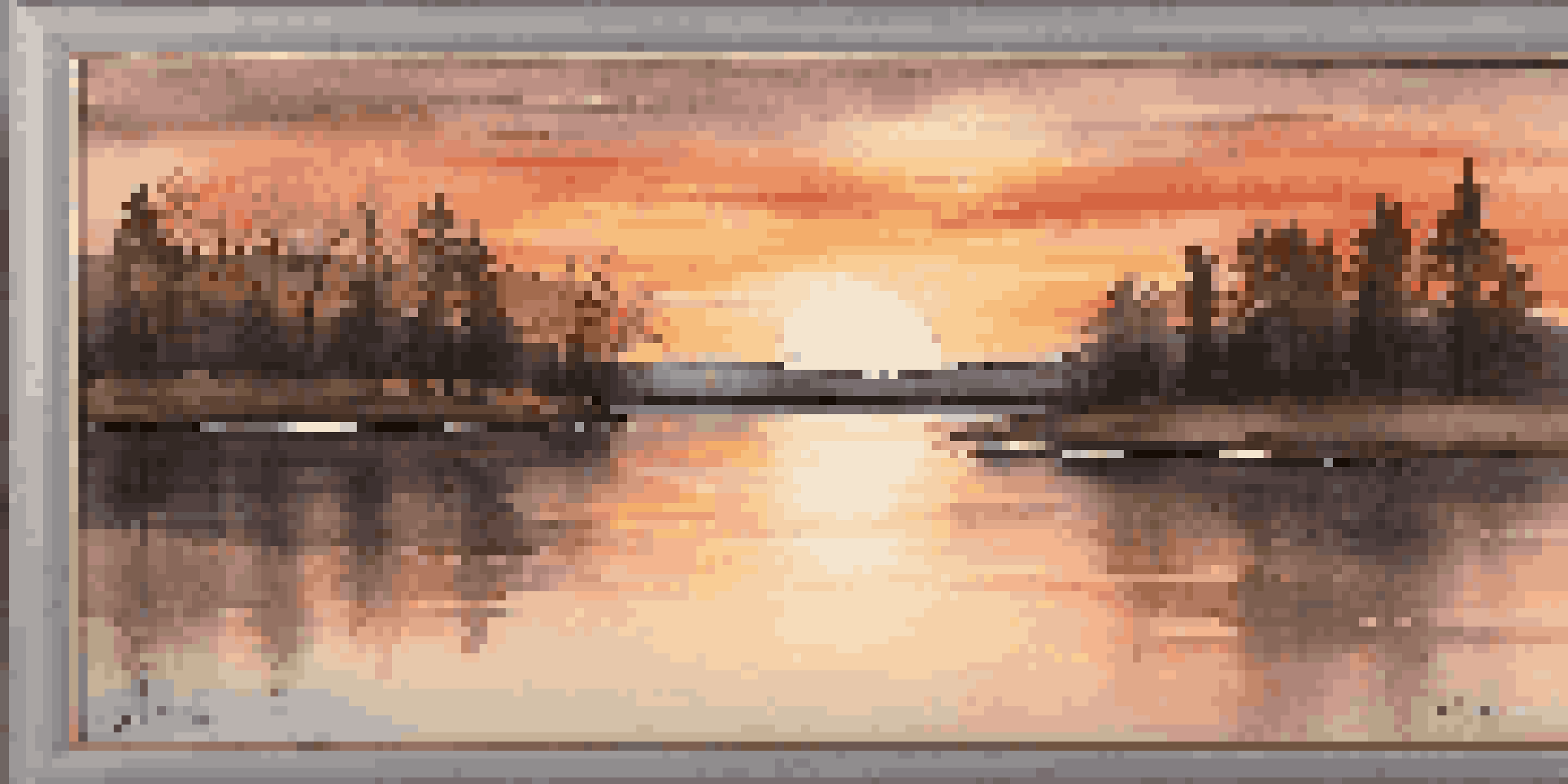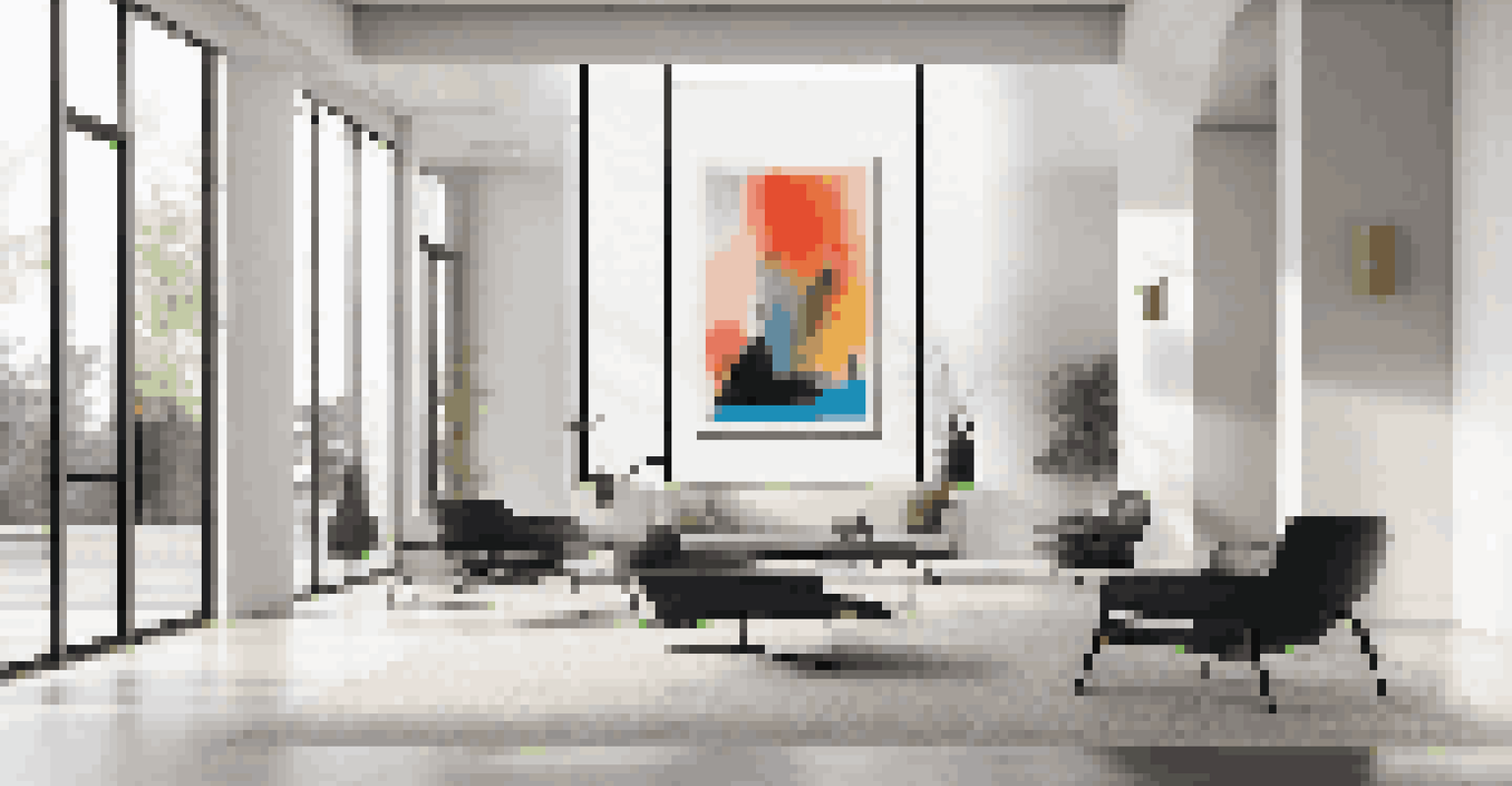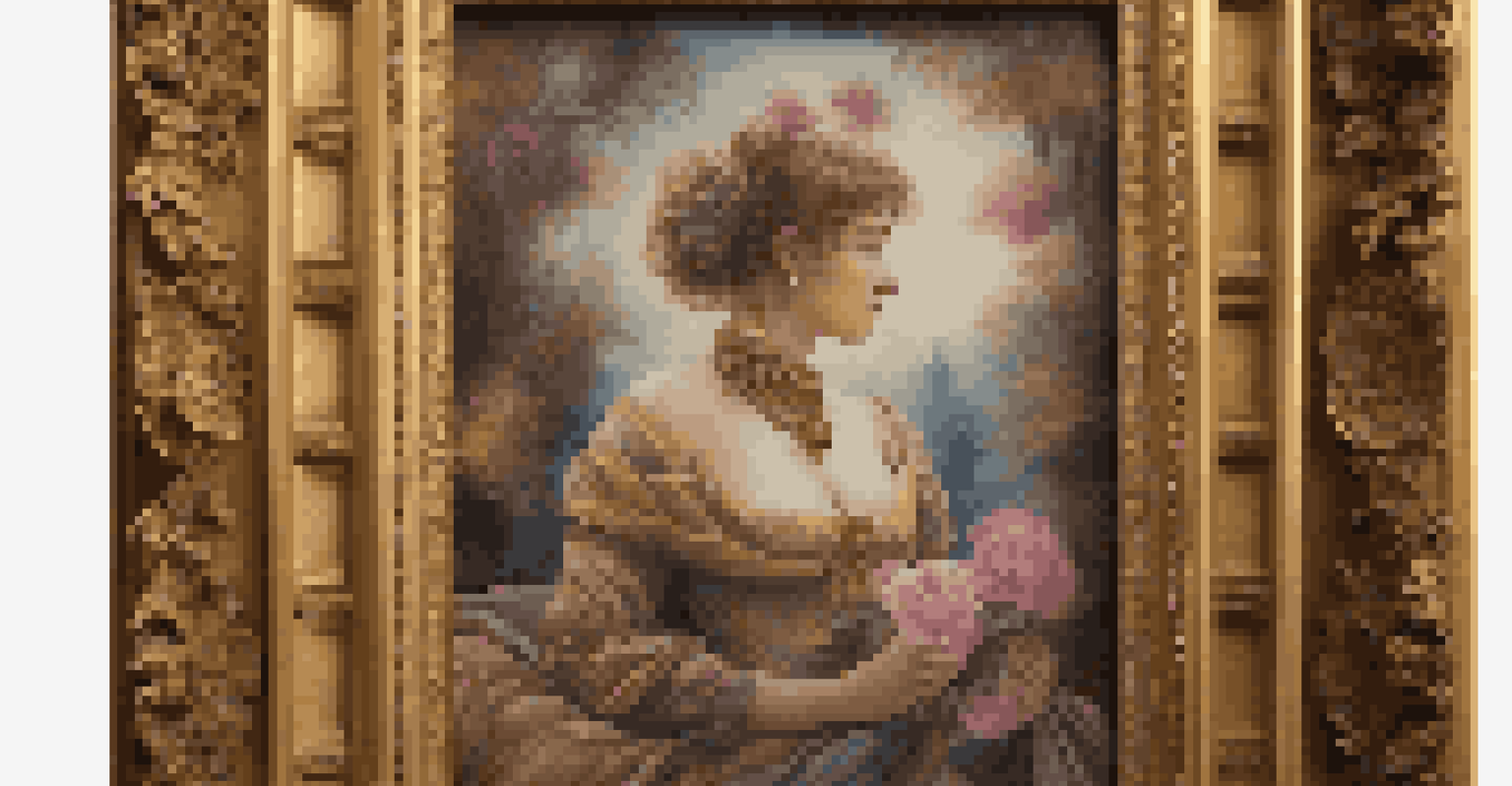Framing Art Investments: How Presentation Affects Value

Understanding the Role of Framing in Art Investment
Framing is often seen as a mere protective measure for artwork, but it plays a crucial role in the overall value of an art piece. A well-chosen frame can enhance the artwork's aesthetics, drawing attention to its features and colors. Think of framing as the finishing touch that completes a masterpiece, similar to how a well-tailored suit accentuates one's appearance.
Art is not what you see, but what you make others see.
Art investors should recognize that the right frame can elevate a piece from ordinary to extraordinary. Just as a beautiful presentation can make a meal more appetizing, a thoughtful frame can significantly impact how art is perceived and valued. In the competitive art market, presentation can be a game-changer.
Moreover, the style and quality of the frame can convey the artist's intent or the mood of the artwork. For instance, a rustic frame may complement a landscape painting beautifully, while a sleek, modern frame may be better suited for contemporary art. Understanding these nuances is key for investors looking to maximize their art's value.
Different Frame Styles and Their Impact on Perception
Frame styles vary widely, and each can influence how viewers perceive the artwork. Traditional frames, like ornate gold leaf, evoke a sense of history and elegance, making them ideal for classic pieces. On the other hand, minimalist frames can create a modern, clean look that allows the artwork to take center stage.

Consider how the frame communicates the character of the piece. A bold, colorful frame might energize a vibrant abstract painting, while a muted frame could enhance a subtle, monochromatic work. This alignment of style can significantly affect an art piece's marketability and perceived value.
Framing Enhances Art Value
A thoughtfully chosen frame can significantly elevate the perceived value of artwork, much like a fine suit enhances one's appearance.
Art investors should therefore consider not just the artwork itself but how the framing complements it. A mismatched frame could detract from the overall appeal, leading potential buyers to undervalue the piece. Thus, selecting the appropriate frame is a strategic decision that can influence the buyer's impression and the art's final sale price.
Materials Matter: Choosing the Right Frame
The materials used in framing also play a vital role in determining value. High-quality wood or metal frames not only protect the artwork but also signal to buyers that the investment is serious. Just as luxury brands often use premium materials to convey quality, a well-crafted frame can enhance the perceived worth of the art.
The frame is the first thing the viewer sees, and it can set the tone for the artwork that follows.
Conversely, using cheap materials can give the impression that the artwork itself is of lesser quality. Imagine a priceless painting being showcased in a flimsy plastic frame; it undermines the value and can deter potential buyers. Therefore, investing in quality framing materials is essential for art investors.
Moreover, the choice of glass or acrylic glazing can also impact the presentation. Anti-reflective glass, for instance, minimizes glare and enhances visibility, allowing the artwork to be appreciated fully. This attention to detail can make a lasting impression on viewers, potentially increasing the artwork's value.
The Psychological Impact of Framing on Art Value
Framing does more than just beautify; it can also influence how we emotionally connect with art. A well-framed piece can evoke feelings of nostalgia or joy, enhancing the overall experience for the viewer. This emotional connection can translate to higher perceived value, making the piece more desirable.
In the art world, perception is key. Buyers often associate well-framed art with professionalism and care, leading them to believe that the artwork itself is more valuable. This psychological aspect can affect bidding behavior at auctions or negotiations in galleries.
Quality Materials Matter
Using high-quality framing materials not only protects the artwork but also signals serious investment to potential buyers.
Investors should consider the psychological implications of framing when showcasing their collections. A thoughtfully presented piece can create a narrative that captivates potential buyers, ultimately leading to a more lucrative investment. The right frame has the power to transform mere interest into genuine desire.
Market Trends: What Frames are Currently in Demand?
Just like fashion, the art market has its trends, and framing is no exception. Currently, there is a growing demand for sustainable and eco-friendly materials in framing. Buyers increasingly prefer frames that reflect a commitment to environmental responsibility, which can enhance the overall appeal of the artwork.
In addition to sustainability, styles such as vintage and reclaimed wood frames are becoming popular. These frames not only add character but also tell a story, which resonates with buyers looking for unique, one-of-a-kind pieces. Keeping an eye on these trends can help investors select frames that align with market preferences.
Being attuned to these market dynamics allows art investors to make informed decisions about framing. A piece presented in a trendy frame could attract more attention, leading to quicker sales or higher offers. Thus, staying updated on framing trends is essential for maximizing art investments.
Framing for Preservation: Protecting Art Investments
Beyond aesthetics, framing serves a vital function in preserving art. Proper framing techniques prevent damage from UV rays, humidity, and dust, ensuring that artworks maintain their original condition. This protective aspect is crucial for investors looking to hold onto their pieces long-term.
Investors should prioritize archival-quality materials when framing valuable artworks. Acid-free mats and UV-protective glass can significantly prolong the lifespan of a piece, maintaining its value over time. Just as a well-preserved vintage wine improves in value, so too can art that is carefully protected.
Framing Impacts Marketability
The right frame style can influence buyer perception and market trends, making it vital for investors to stay informed and choose wisely.
In this way, framing is not just about immediate presentation; it's an investment in the future of the artwork. By prioritizing preservation alongside aesthetics, investors can ensure that their art remains valuable for years to come. This dual focus is what separates successful art investors from the rest.
The Final Touch: How to Choose the Right Frame
Choosing the right frame can feel overwhelming, but it doesn't have to be. Start by considering the artwork's style and color palette; the frame should complement, not compete with, the piece. For example, a bold painting might benefit from a simple, understated frame that allows it to shine.
Next, think about the environment where the artwork will be displayed. A frame that suits a modern home might not be ideal for a traditional setting. Matching the frame to its surroundings can enhance the overall impact of the artwork, making it more appealing to potential buyers.

Lastly, don't hesitate to seek professional advice. Framing experts can provide valuable insights into which options will best serve your art investment. With careful consideration of style, context, and expert guidance, you'll be well on your way to selecting a frame that enhances both the artwork and its value.